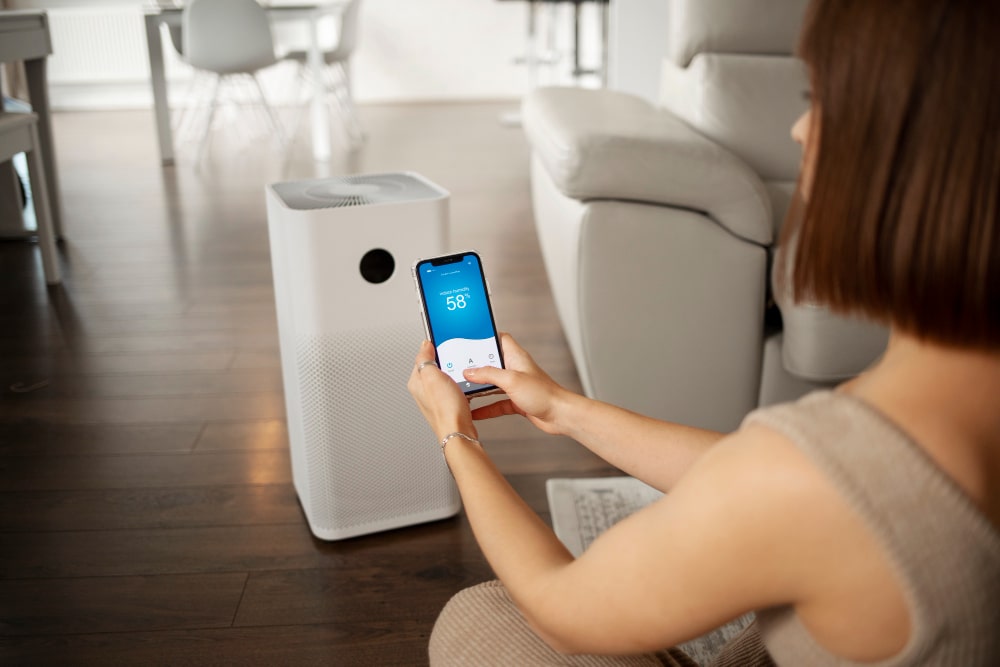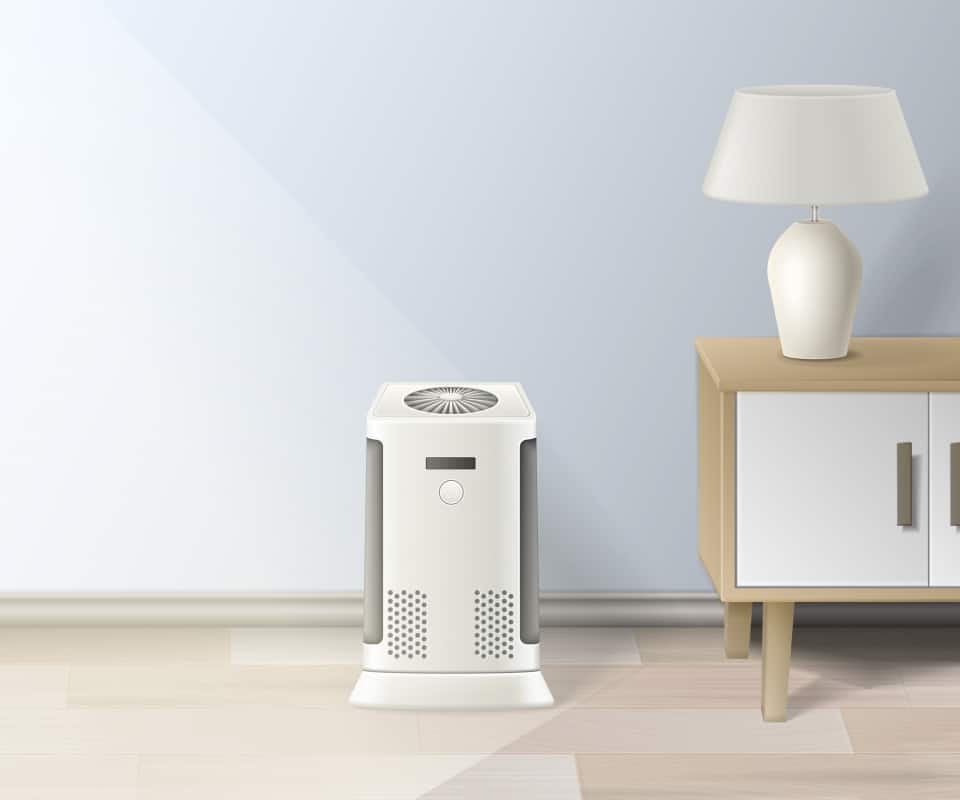With the aim of keeping indoor air fresh and healthy, two notable aspects of air purification technology have emerged: UV Germicidal and Photo-Catalytic Systems. These modern technologies use UV light and catalytic processes to eliminate hazardous contaminants effectively.
Read on to learn about the concepts, benefits, and applications of both UV Germicidal and Photo-Catalytic Systems.
UV Germicidal Systems
UV Germicidal Irradiation (UVGI) stands out as a modern air purification method that relies on the germicidal attributes of ultraviolet light. This technique involves subjecting airborne germs, including viruses and bacteria, to UV-C light—a short-wavelength variation within the ultraviolet spectrum ranging from 100 to 280 nm. This exposure affects the nucleic acids of the germs, specifically DNA and RNA, triggering mutations that restrict their ability to reproduce.
Benefits of UVGI
Ultraviolet Germicidal Irradiation (UVGI) stands out for its versatile benefits in disinfection. By employing UV light, it effectively eliminates bacteria, viruses, and fungi.
Germ Elimination
UVGI effectively removes germs, bacteria, and other microbes from the air, creating a healthier indoor environment and lowering the risk of infection.
Proven Air-Cleaning Technology
The American Society of Heating, Refrigerating, and Air-Conditioning Engineers (ASHRAE) has recognized UVGI as a proven air-cleaning technology. The methodology has an efficient track record of reducing the spread of airborne illnesses.
Targeted Germ Removal in Hospitals
UVGI systems, also known as upper-room air UVGI systems, can effectively maintain air quality in hospitals and other places where a high level of germ elimination is critical for patient safety.
Integration with HVAC Systems
UVGI is easily integrated into commercial building HVAC systems, increasing the efficiency of current systems and potentially saving energy and money on utility bills.
Microbial Sterilization
UVGI lights sterilize microorganisms, stopping them from cycling through the HVAC system and ductwork, improving indoor air quality and respiratory health.
Continuous System Maintenance
UVGI performs ongoing maintenance on HVAC systems, removing the need for periodic physical cleaning. The lights keep vital components clean, preventing mold growth and decreasing allergy and asthma triggers.
Energy Efficiency
UVGI encourages energy savings and environmental initiatives by allowing current systems to perform optimally without excessive strain.
Reduction of Harsh Chemical Usage
UVGI eliminates the need for harsh chemicals, such as bleach tablets, in drain pans. This ability can provide an environmentally friendly, chemical-free option that removes the existing odors.
Healthier Indoor Air Quality
UVGI’s primary purpose is to improve indoor air quality, creating a cleaner and healthier environment for residents by avoiding the spread of airborne illnesses and allergies.
Cost-Effective Solution
UVGI systems, with their capacity to enhance air quality, minimize the need for manual cleaning, and contribute to energy savings. They provide a low-cost, long-term solution for maintaining a safe indoor environment.

Photo-Catalytic Systems
Photocatalytic systems rely on photocatalysis, which uses light energy to start a catalytic reaction. This technique commonly uses titanium dioxide (titania), activated by ultraviolet (UV) radiation, as a catalyst in air purifiers. Titanium dioxide, a semiconductor, forms a thin coating on a substrate, typically ceramic or metal.
How Photo-Catalysis Works
Electrons are released on the surface when UV light reaches the titanium dioxide catalyst. Electrons interact with water molecules in the air, forming hydroxyl radicals (OH·), highly reactive forms of hydroxide ions (OH−). These hydroxyl radicals attack larger organic pollution molecules, breaking their chemical bonds and converting them into harmless compounds such as carbon dioxide and water. This oxidative mechanism distinguishes Photo-Catalytic Oxidation (PCO) from traditional air purifiers, which only trap contaminants.
Benefits of Photo-Catalytic Systems
Photo-Catalytic Systems offer a range of advantages, making them valuable in various applications. This innovative technology utilizes photo-catalysts to trigger chemical reactions that break down pollutants and contaminants.
Efficient Air Purification
Photo-catalytic systems are recognized for their effectiveness in purifying the air. Unlike conventional methods that merely trap particles, these systems actively break down and neutralize pollutants, ensuring a cleaner and healthier indoor environment.
Allergen Reduction
For allergy sufferers, photo-catalytic systems are a boon. They excel at capturing and deactivating allergens such as dust mites, pollen, and pet dander, providing significant relief and enabling individuals to breathe more comfortably.
Effective Odor Elimination
Persistent odors from cooking, pets, or smoking can be a challenge, but photo-catalytic systems excel at eliminating them at the source. This leaves the air fresh and free from unpleasant smells, creating a more pleasant indoor atmosphere.
Bacterial and Viral Deactivation
In a world where infectious diseases are a concern, photo-catalytic systems offer an additional layer of protection. The process effectively deactivates bacteria and viruses, reducing the risk of airborne transmission and promoting a healthier environment.
Long-Lasting Performance
Photo-catalytic systems are known for their durability. Unlike traditional methods that require frequent replacements, these systems have a longer lifespan, reducing maintenance costs and the inconvenience of constantly changing components.
Environmentally Friendly
With a growing focus on sustainability, photo-catalytic systems align with environmentally conscious choices. This technology represents an eco-friendly approach to air purification, appealing to those looking to minimize their environmental impact.
Reduced Energy Consumption
Photo-catalytic systems tend to be energy-efficient. They consume less power than conventional systems, contributing to lower energy bills and a more sustainable lifestyle.
UV Germicidal vs. Photo-Catalytic Systems
UV Germicidal Systems and Photo-Catalytic Systems are both advanced technologies with distinct features and applications. Understanding the differences between them is crucial in selecting the most suitable solution for specific needs.
Effectiveness
UVGI and Photo-Catalytic Systems have proven effective in purifying air, but the choice depends on the specific pollutants and air quality challenges in a given environment.
Ozone Production
While UVGI systems may produce negligible amounts of ozone, Photo-Catalytic Systems require careful monitoring due to their potential to generate ozone as a byproduct.
Installation and Maintenance
UVGI systems, when integrated into HVAC systems, demand strategic installation for optimal performance. Photo-catalytic systems require attention to catalyst longevity and may involve periodic replacements.
Application Areas
UVGI finds its strength in large-scale HVAC applications, while Photo-Catalytic Systems, with their versatility, are suitable for various environments, including residential spaces.
Understanding the unique concepts, benefits, and considerations of UV Germicidal and Photo-Catalytic Systems empowers individuals and industries to make informed decisions for achieving cleaner, healthier indoor air. As technology advances, the synergy of these systems may pave the way for comprehensive air purification solutions, ensuring a breath of fresh and purified air for generations to come. Quality Heating & Sheet Metal Company, Inc. is ready to help you with top-notch UV Germicidal and Photo-Catalytic Systems. Contact us today to learn more.




0 Comments